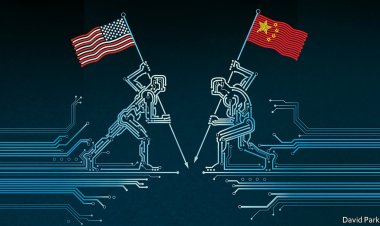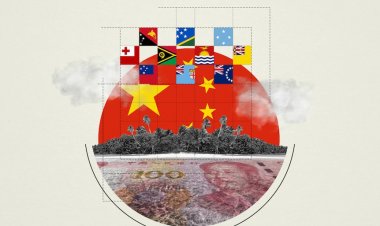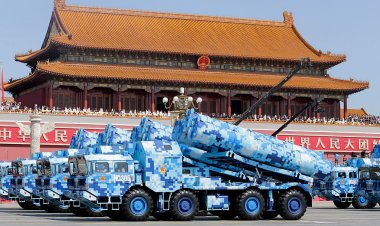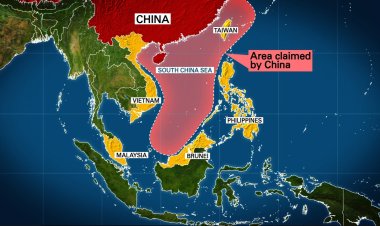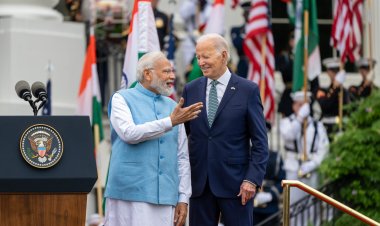Supply Chain Resilience Initiative: Re-engineering Global Supply Chain
Against the backdrop of the unprecedented impact of the COVID-19 pandemic and unforeseen disruptions of global supply chains, the trade ministers of India, Japan, and Australia formally launched the Supply Chain Resilience Initiative.
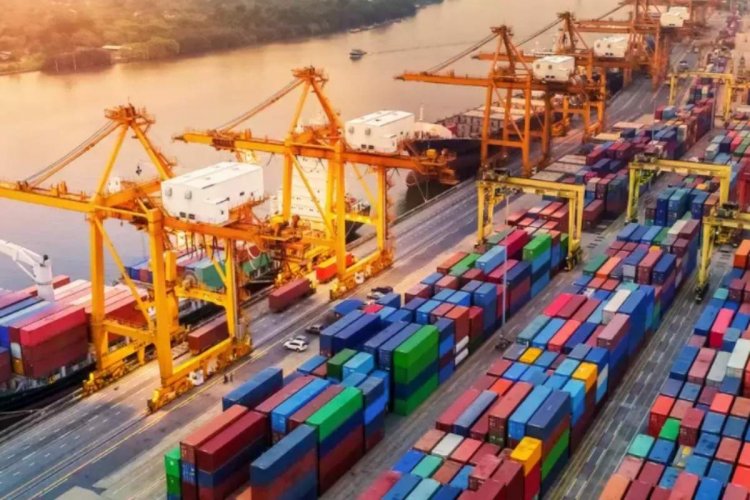
Analysis
By Lavanya Luthra and Saundarya Shrotriya
Against the backdrop of the unprecedented impact of the COVID-19 pandemic and unforeseen disruptions of global supply chains, the trade ministers of India, Japan, and Australia formally launched the Supply Chain Resilience Initiative. It is an approach that helps countries to diversify supply risk across a grasp of supplying nations, rather than being dependent on one or a few nations. On 27th April 2021, in a joint statement during a trilateral meeting, trade and commerce ministers from India, Australia, and Japan highlighted that “SCRI aims to create a virtuous cycle of enhancing supply chain resilience, to eventually attain strong, sustainable, balanced, and inclusive growth in the Indo-Pacific region”. Earlier the three nations, also the Quadrilateral Security Dialogue (QUAD) allies, met in September 2020 to discuss the idea of creating resilient supply chains and reducing the dependence on the Chinese market, especially for finished goods and medical supplies during the pandemic.
According to the world trade organization’s statistical review (2020), China stood as the second-largest global trader in commercial services in 2019. China’s arrival into the world trade organization in 2001⸺ which began with just cheap labour cost investments from the developed countries⸺ has accentuated its global market capture. Following the Coronavirus outbreak in Wuhan, the country began to shut its many manufacturing units, which resulted in a $50 billion loss to the Chinese export-dependent global value chain.
Therefore, this initiative is not only a hard-hit moment of realization to curb dependence on China but also a lesson for the world to explore the possibilities of creating new and diverse bonds. The SCRI trio countries are committed to building resilient supply chains in the Indo-Pacific region.
Why was SCRI called?
Covid-19 disrupted global trade and made the world rethink the current configuration of global supply chains. Japan was quick to address its apprehension on this issue and called for action in September 2020. The halt in the supplies severely impacted and consequently impaired the economic activity in Japan. The third-largest economy thus initiated SCRI as a trilateral approach with its budding QUAD partners, India and Australia. These countries welcomed the initiative with its primary goal to reduce economic dependency on a single country, as it could have a crippling impact on the importing nation in case the source precludes the production for involuntary reasons or as a conscious decision.
Japan timely noted that all the three countries share a similar struggle and concern regarding trade and national security. Japan’s White paper on International Trade and Economics released in July 2020 and June 2021 widely stated the harsh consequences of the pandemic and the importance of a credible system for sustainable supply chains. The papers drew attention towards diversifying through international cooperation and the vitality of digital acceleration. Diversification procurement is being considered since the aftermath of the Great East Japan Earthquake and the Kumamoto Earthquake in 2011 and 2016 respectively.
According to these white papers, the epiphany to cut dependency on China took place between pre-pandemic imports (worth $169 billion) in 2019, and the logjam in the supply chain, intentionally or unintentionally, when coronavirus impacted Japan the most.
Additionally, Australia and Japan have proved to be natural partners in the past, with highly complementary economies. Japan is Australia’s second-largest trading partner after China. In 2018-19, goods exported to Japan were 15.8 per cent of the total exports of Australia. Furthermore, with increasing bilateral tensions between China and Australia, it seems evident that Australia would seek to diversify its trade through SCRI.
Alongside, India, Japan, and Australia view the Indo-Pacific region as an economic powerhouse. and intend to have a ‘Free and Open’ Indo-Pacific. The grouping also intends to include ASEAN, but the possible implications of the recently signed Regional Comprehensive Economic Partnership (RCEP) are yet to be discovered. Other than that, the group has agreed to consider the expansion based on consensus, in the future. The ministers have decided to convene at least once a year to guide the implementation and development of the SCRI.
What does it mean for India?
While mentioning supply chains in his 74th Independence day speech, Prime Minister Narendra Modi stated, “many businesses around the world see India as a supply chain hub today. Now we have to move forward with ‘make in the world’ as well as ‘make for the world.” In his previous speech at Shangri-La Dialogue in 2018, PM Modi also prompted India’s approach towards its Indo-Pacific vision as inclusive, open, united, and central to ASEAN. He aimed to engage more vigorously in the region through the SAGAR policy.
In the last trilateral meeting, Piyush Goyal, India’s Minister of Trade and Commerce, said, “we could provide the core pathway for linking value chains in the region by creating a network of reliable long-term supplies and appropriate capacities.” He also highlighted that the aggregate GDP of the three nations was $9.3 trillion in 2019, with merchandise goods trade of $2.7 trillion and services trade of $0.9 trillion, which is a strong start for such an opportunity.
According to some experts in India, SCRI will provide an opportunity of building an economic pillar to the QUAD alliance, necessary for deeper economic cooperation and trade between the member nations.
The China challenge has been one of the major motivations for India to participate in partnerships like QUAD and SCRI. Japan and Australia might have expected that following the border tensions with China, India may be ready to lead the SCRI alliance and replace China’s role in its economy. If India can enhance self-reliance and work with other exporting countries, it can establish resilience in the supply networks of the economy. This will not only help India to boost its manufacturing competitiveness but also increase its share in world trade.
The China Challenge
Cold peace between the US and China has risen generously. Washington seeks an edge over China’s trade domination, while Beijing is attempting to abridge its weakness to the United States’ long reach. This US-China-led strategic chain has had severe ripple effects on the economies at proximity like India and Japan, which has expedited the revolutionary need to reconfigure global supply chains. In fact, the US President also signed an executive order on supply chain reconsideration in February this year. Being a QUAD partner, it can be considered that the US could be a plausible partaking member of the SCRI in near future. On the other hand, Beijing’s anxiousness because of its self-defined containment theory won’t stop Sino rapid actions in the Indo-Pacific. Nonetheless, this bilateral encumbrance is one of the focused reasons to establish a resilient supply chain.
Not surprisingly, Beijing’s reaction to call the SCRI “unrealistic” and “artificial” suggests discomfort in the capital. The Chinese Ministry of Foreign Affairs Spokesperson, Zhao Lijian, said that they hope the SCRI pact will follow a “free market economy & honour trading rules”. He also talked about mutual trust and balance in the region. References drawn by Lijian have unfolded hypocrisy when using the words “free” and “rules”. China clearly wants leeway for itself in the Indo-Pacific, albeit, such remarks ascribe to the piled-up insecurities. Evidently, in comparison to the 2017 QUAD meeting in Manila, which China called a mere headline, it looks alarmed now and rethinking its previous dismissiveness.
XI Jinping’s dreams to attain a free hand in the Indo-Pacific by win-win cooperation through Belt-Road Initiative (BRI), have been crushing gradually with every QUAD meet. The BRI is a progression of financial projects planned by the dragon state to cultivate monetary collaborations along the new silk road, which extends from the Chinese continent through East to Eurasia, claiming to majorly cover the Indo-Pacific. The BRI route is an all-in-one pack⸺ with a plethora of expansive strategies in disguise of global development⸺ that primarily aimed to serve the interests of the Communist Party of China. It has consistently been a target of allegations.
First, the Debt Trap Diplomacy, the enchanting $1 trillion initiative to support the infrastructure of developing nations, which deliberately impose huge loans and leave them no option but to give in to Chinese influence. Secondly, environmental disasters because of the foreign policy changes since 2013, changing the natural diagram of the Earth. The South-East Asia investment regime is likely to cause habitat misfortune through the extraction of natural resources and fossil fuels. The Worldwide Fund for Nature, 2017 report also draws the possible impacts of the BRI on the environment in the areas it functions.
Concurrently, RCEP is a solid contender to SCRI. The inclusion of ASEAN countries and FTA partners in the trade agreement makes it the largest world trading agreement. RCEP aims at creating a unified market for easy and smooth flow of goods and services to and from its members. Unsurprisingly, China’s geostrategic interests and capabilities will assign it to be the ‘King’ of this bloc. A push by China to RCEP in 2012 to counter the US-led Trans-Pacific Partnership (TPP) revealed its dominant statecraft through the BRI.
India’s sign out from RCEP in 2020 with escalating tensions with China on the trade and the land front as one of the major reasons is still not enough to make a strong case for SCRI to bloom. India raised critical concerns regarding exposure to china, the absence of definite rules for defined products, and tariffs. New Delhi does not want to be under the Chinese obligation and China praising countries, especially after the Ladakh clashes last year. India also wanted RCEP to avoid the favouritism factor from the arbitrage section as it is not willing to provide leverage over delicate matters, particularly to such nations with which it has border disputes.
Given these factors, India can prosper in SCRI as one of its founding members and build safe trading practices and unstrained partnerships. Although, China’s assertiveness and keen search for a power vacuum won’t halt anytime soon. but even in the nascent stage, SCRI comes as a critical provocation to Beijing. Therefore, SCRI, started by three robust democracies, can give noteworthy consideration, adaptability, and direction to the global supply chain.
How can SCRI make a mark?
Interpretations concerning the SCRI’s potential can be drawn from various bilateral and multilateral partnerships such as Quad, Regional and National initiatives, and the ‘China plus One’ strategy.
It is imperative to comprehend how SCRI and Quad complement each other. The US, India, Japan, and Australia, four eloquent democracies, are well placed to overcome Chinese assertiveness. Xi Jinping’s Made in China 2025 vision, inspired by Germany’s 4.0 plan, seeks to bring forth the fourth industrial revolution. Therefore the methodology to confront China’s geo-economic impact goes beyond the use of the military. A multilateral bloc like Quad can effectively apply a financial model that viably addresses underlying drivers of China’s economic leverages and provide a transparent, secure, and advanced alternative for current trade trends. For such arrangements to succeed, a change in policies is necessary. Therefore, the SCRI can help in diversification of Quad’s agenda and shall also remove the tag of “Asian NATO”.
Alongside, SCRI can support Quad’s Vaccine Supply Initiative to gain the lead against RCEP’s vaccine and medical support to ASEAN. As the first assignment for SCRI, the vaccine partnership shall give immense exposure and a baseline for a successful and heterogeneous supply chain in the region. Development patterns of Quad appear to be project-based and such amalgamation requires SCRI to pace up and be highly structured.
Recent Quad meetings have also regularly emphasized 5G technology. Officials of the grouping have been discussing the importance of 5G digital connectivity in the backdrop of the growing HUAWEI operations throughout the world. Last year PM Narendra Modi and PM Yoshihide Suga decided to take a bilateral step towards the future cooperation in the advancement of 5G plus technology. Hence backed with the QUAD’s security support, SCRI can reaffirm its determination.
SCRI nations could also take it to their advantage the other pacts they have with other like-minded countries on–sustainable infrastructure, seamless logistics, tech, and people mobility to establish a safer alternative. If merged with national and regional initiatives, the resilient supply chain drive could yield benchmark examples for an ideal global supply chain.
According to the Indian Ministry of External Affairs, in a teleconference on 20th March 2020, seven countries shared their assessment of the COVID-19 situation. The United Kingdom has considered SCRI offers an opportunity to assemble free trade cooperation among like-minded nations. In the same way, nations interested in joining Quad Plus could be approached through bilateral links to strengthen ties of the grouping.
According to Candace Browning, Head of BofA Global Research, across 12 industries from semiconductors to capital goods, companies in more than 80% of those industries are rethinking or planing to rethink at least some of their supply chains. India, Japan, and Australia are heavily dependent on China for electrical equipment, machinery, nuclear reactors, and pharmaceutical ingredients. They even shifted their focus on being self-reliant via schemes like India’s ‘Atmanirbhar Bharat’ and Japan’s ‘GLOCAL’. Although complete decoupling from China sounds impossible and impractical because it still holds the position of strongest manufacturing competitor. Here, the strategy of ‘China plus One’ comes into play⸺ a strategy that gives accurate meaning to diversification. For example, Intel Corporation adopted a diversification strategy at the early age of 2010 when it expanded its factory outlets in Vietnam.
Jagannath Panda, a Research Fellow at Manohar Parrikar Institute for Defence Studies and Analyses, New Delhi, argues that the Supply Chain Resilience Initiative if implemented effectively, can be a game-changer in decentralizing the global supply chain network. He opined that SCRI parent countries already contain a production footprint. Therefore the initiative needs to have a concrete structure and inclusion of China plus one strategy, expanding to global partners multilaterally.
Conclusion
Supply Chain Resilience has become a concern for nations and industries over the past decade. The major repercussion that came as a shock to the global economy due to the Covid-19 pandemic is disruption of the global supply chain and utter dependence on China, forcing many countries to rethink their current configurations. Following this, the Supply Chain Resilience Initiative, originally mooted by Japan and welcomed by India and Australia, was a much-needed action. In fact, PM Suga has put catalyst nudges to ‘Abenomics’. Thus far, the focus of the SCRI has been on automobiles and parts, petroleum, steel, textiles, financial services, and IT sectors. Wherein India has the potential to redesign the global supply chain network by overarching strategy: security, economic development and status, as Dr S. Jaishankar, India’s Minister of External Affairs has defined it in his book ‘The India Way’.
Simultaneously, the speedy recovery of the Chinese economy from the COVID-19 pandemic and its promises for a mass vaccine campaign promulgates the era of Pax China in coming. Beijing is well aware of the merits and demerits SCRI perhaps has. Therefore to break this hegemony, without states being complacent, the supply chain needs to guarantee its long-term sustainability even in unpredictable times, through Diversification and Vertical Integration.
The trio grouping needs to pave its way by supporting QUAD activities and creating an example for other nations and businesses to join in. The use of hybrid approaches like product segmentation, utilizing the current ecosystem and definitely investing much in research and development. SCRI has the potential to help the complex global supply chain out of the quagmire. Hence, cautiously moving forward, this pressing priority the initiative must establish its significance in the global market.
Lavanya Luthra is a final year student of BA Political Science at Delhi University. She is also Head of Outreach, Public Relations and Media Affairs at Usanas Foundation.
Saundarya Shrotriya is a Psychology Majors and a Postgraduate in Criminology. She is currently pursuing a Diploma in International Affairs and Diplomacy from the Indian Institute of Governance and Leadership. She is a Research Intern at Usanas Foundation.
Disclaimer: This paper is the authors' individual scholastic contribution and does not necessarily reflect the organisation’s viewpoint.


